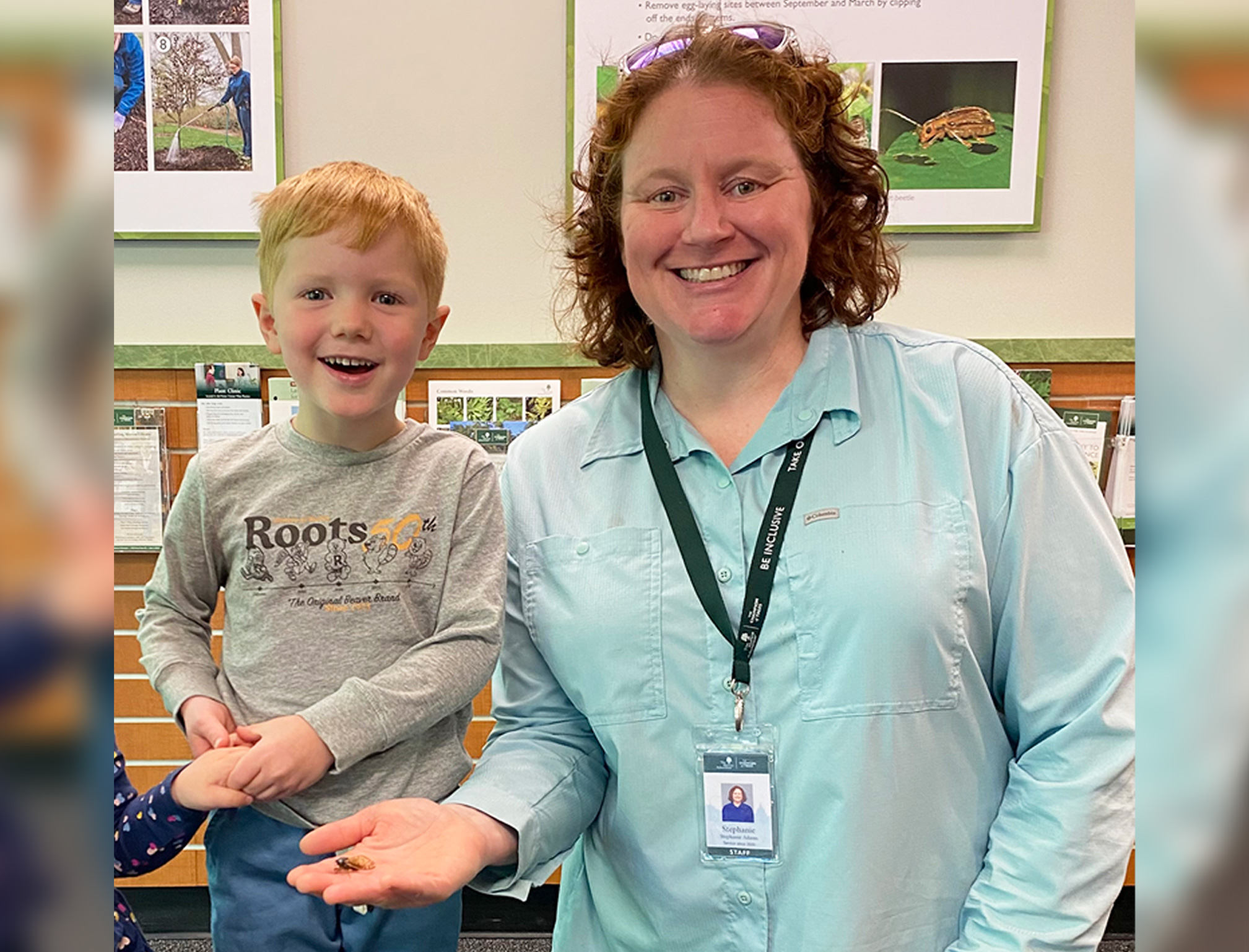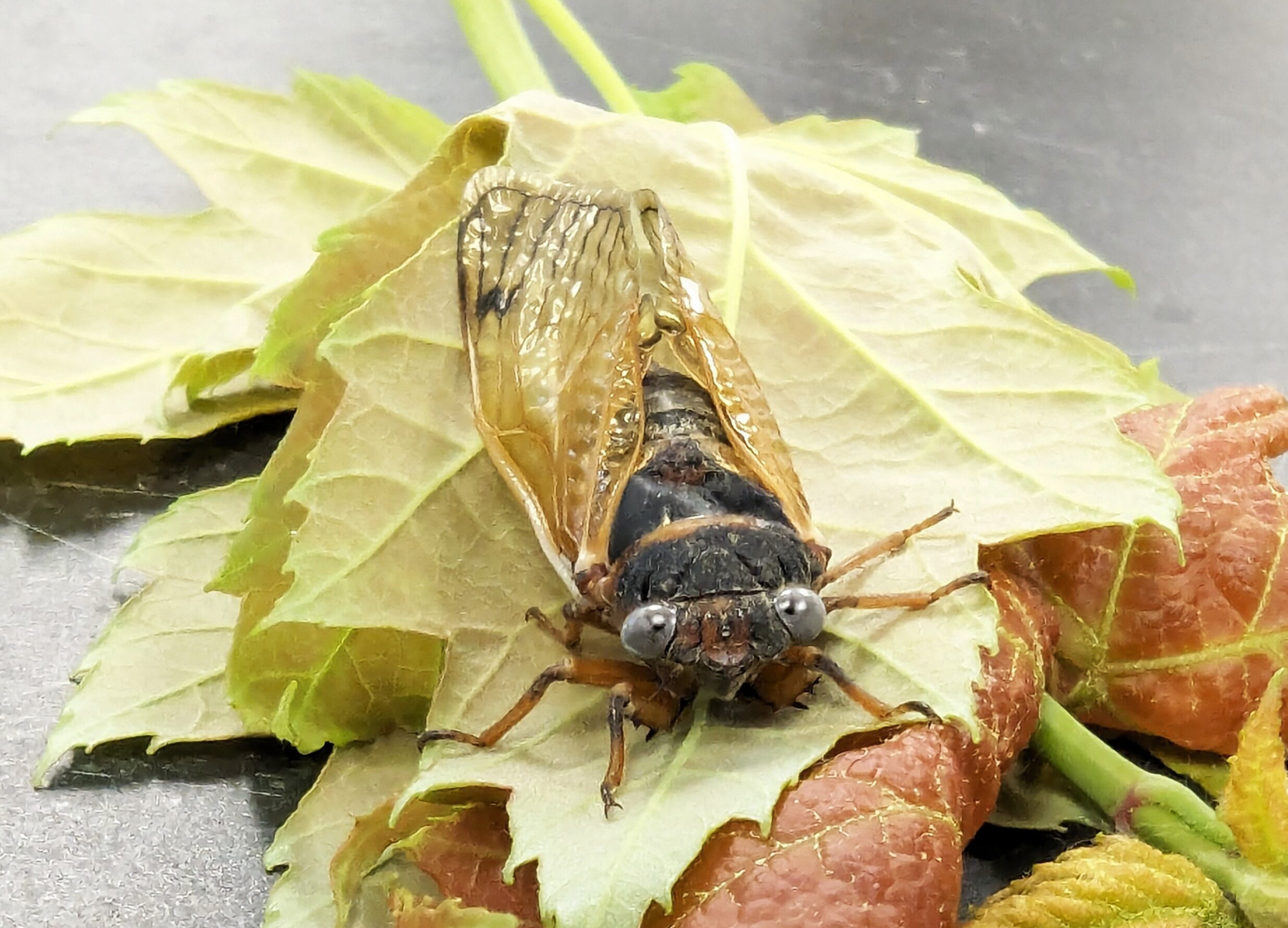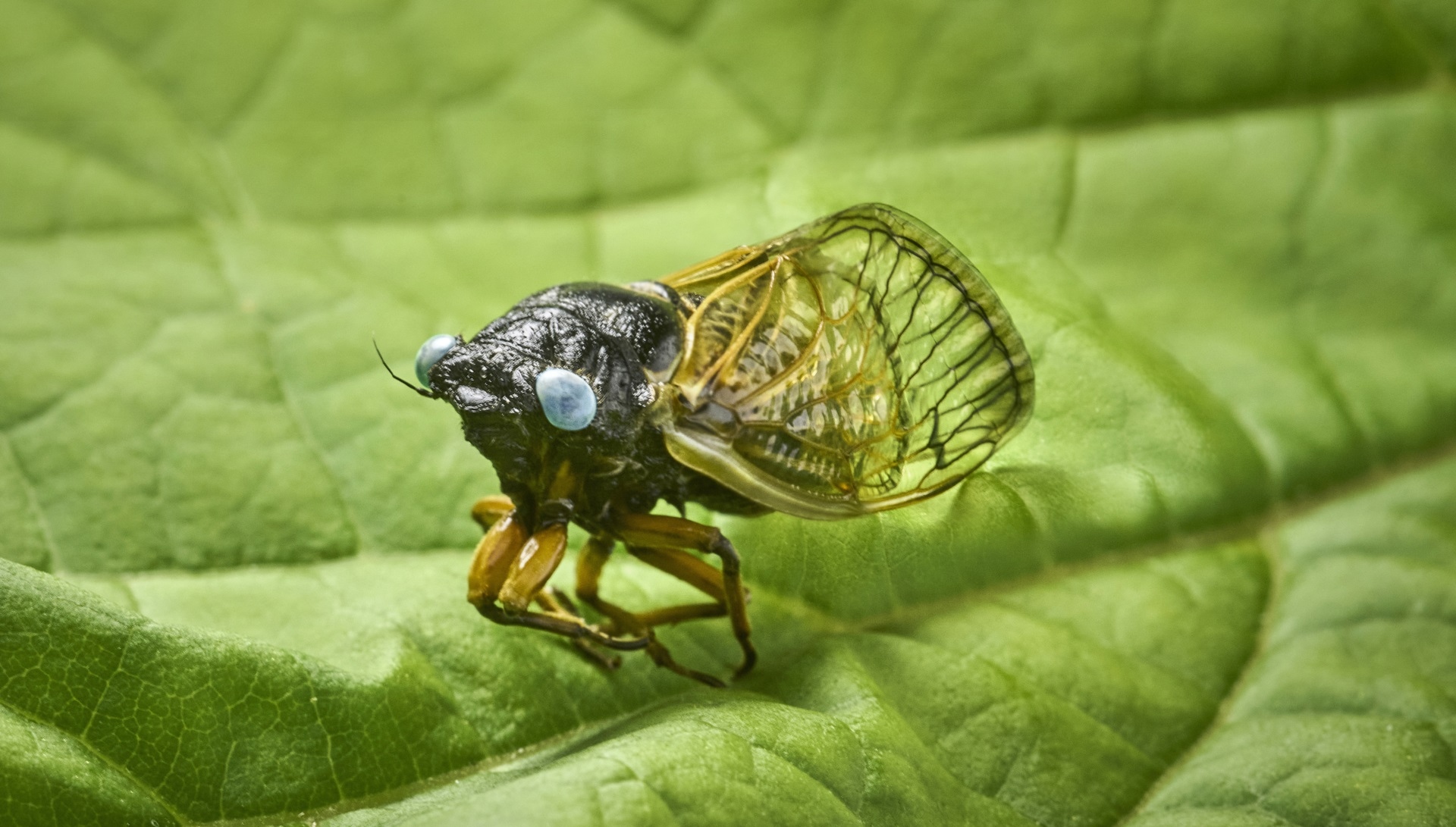May 31, 2024
A local 4-year-old boy discovered something exciting in his backyard on Memorial Day—a rare blue-eyed cicada. Jumping into action, the boy and his mother snapped photos of the special insect, put it in a bug house, and contacted The Morton Arboretum to offer the cicada for research purposes. The 4-year-old cicada fan lovingly named the blue-eyed bug “Bluey.”
The family later visited the Arboretum’s Plant Clinic to provide the cicada to Arboretum plant health care leader Stephanie Adams, one of the Arboretum’s experts studying the 17-year periodical cicadas and their impact on trees and plants.

Stephanie Adams poses for a photo with Bluey and the local boy who made the discovery
In addition to Bluey, now in an Arboretum laboratory, at least one other blue-eyed cicada has been donated to the Arboretum for research by a member of the public. Three other blue-eyed cicadas have been spotted at the Arboretum, two in the Children’s Garden and one in the Ground Cover Garden.
Nearly all periodical cicadas have red eyes. It is unknown whether this blue-eyed variant is caused by a genetic mutation or the presence of a rare allele (gene). Nonetheless, it is rare among the population, making these remarkable finds among the many millions of cicadas that have emerged in the Chicago area this spring.
All three blue-eyed cicadas in the Arboretum laboratory are female and either Magicicada cassini or M. sependecula.

A blue-eyed cicada found in Hinsdale, donated by an Arboretum member
As documented in this AP news article, the first blue-eyed cicada found by a guest at the Arboretum was spotted on Friday, May 24, captivating both visitors and staff. Arboretum plant health care leader Stephanie Adams held the rare insect as children and their families eagerly gathered around to get a closer look. Soon after, the cicada was safely released to join its red-eyed relatives. The Washington Post has also covered the Arboretum’s blue-eyed cicadas.
The discovery of blue-eyed cicadas adds to the excitement of 2024, in which two broods of periodical cicadas have emerged across Illinois and the Eastern United States. The Arboretum is documenting and studying this natural phenomenon.
Cicadas can now be heard singing their mating calls in trees at the Arboretum and all across the region. Although most are high up in the tree canopy, small numbers of these harmless insects can be seen near the ground, where children and other curious nature lovers can examine and take pleasure in them. They do not interfere with walking, playing, or enjoying the sights and experiences of the Arboretum.



